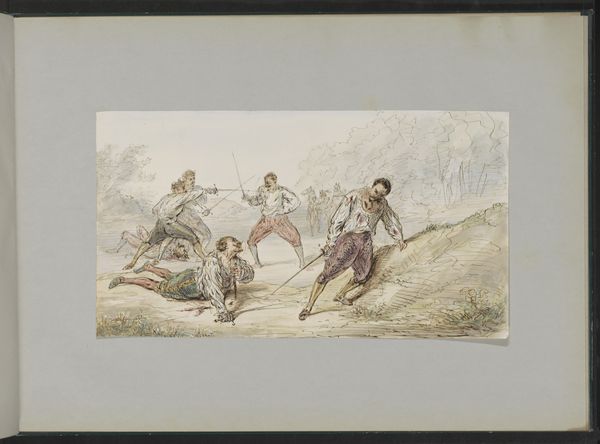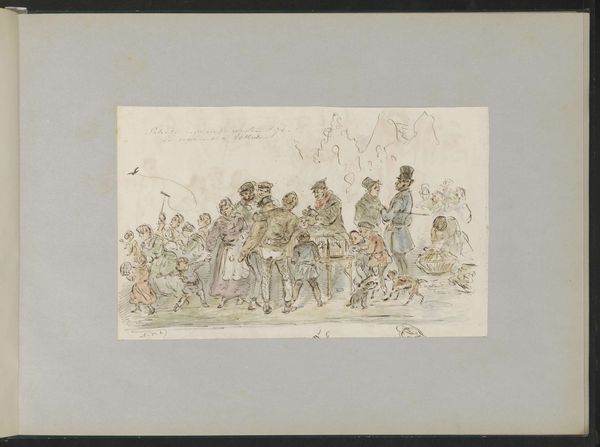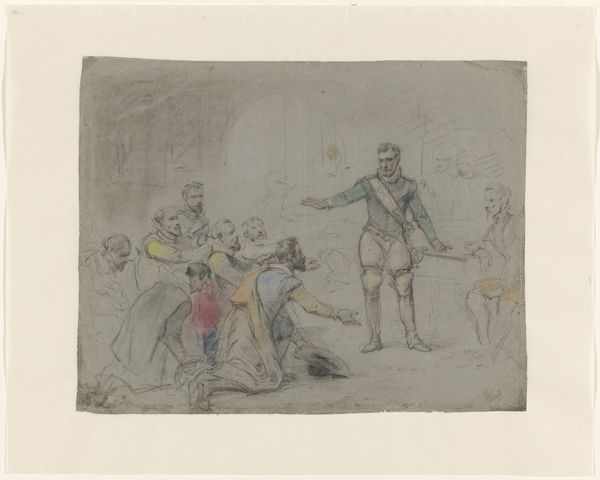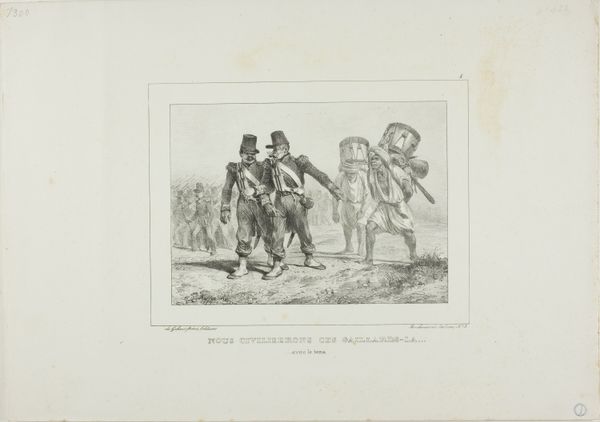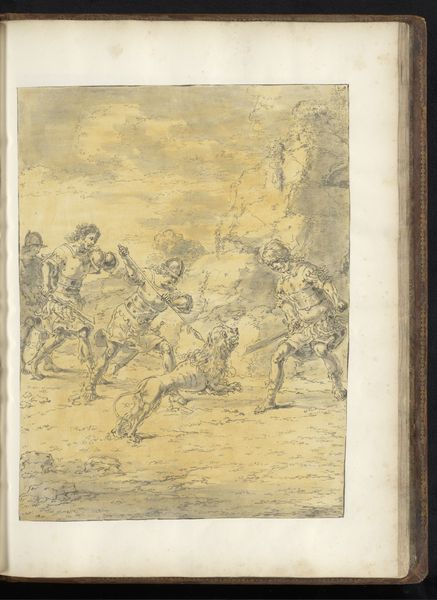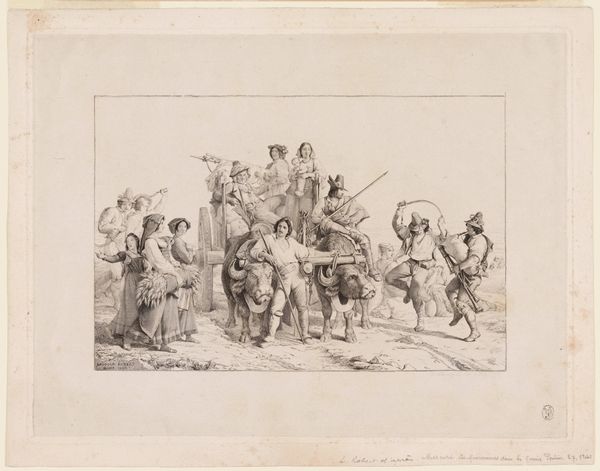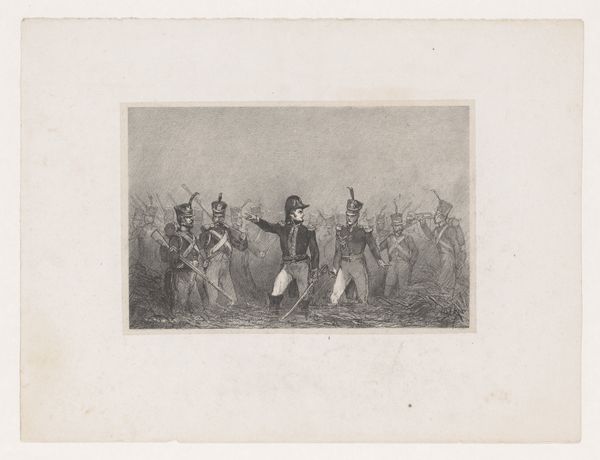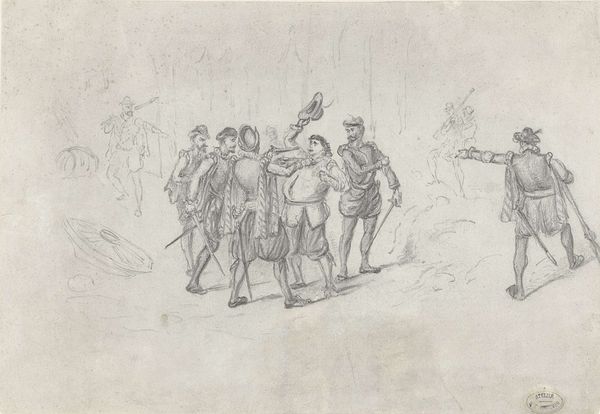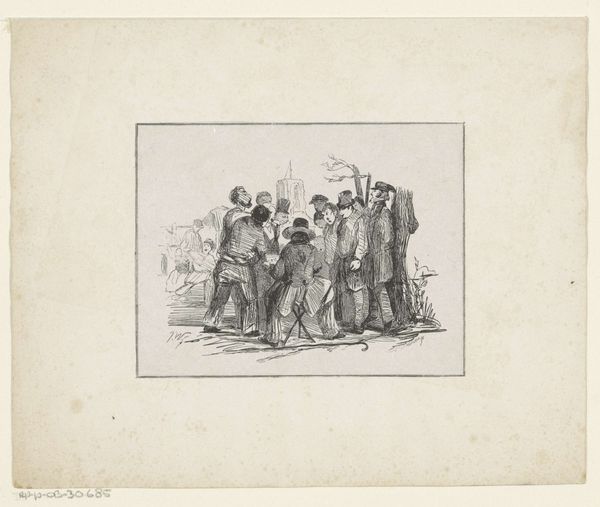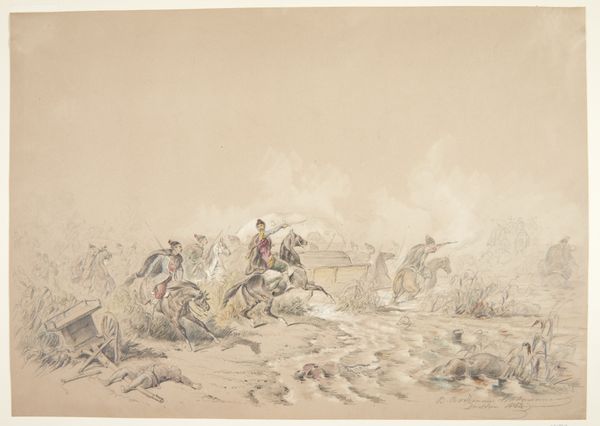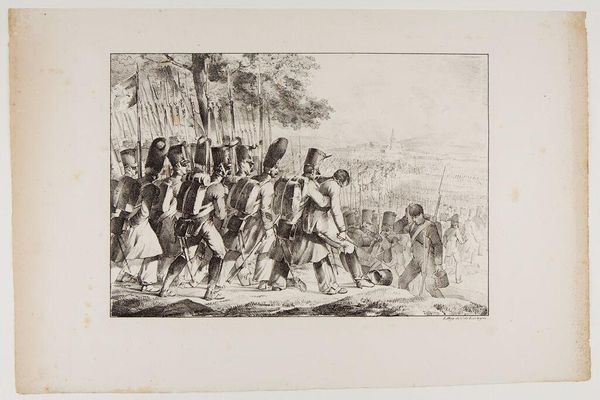
Dimensions: height 212 mm, width 260 mm
Copyright: Rijks Museum: Open Domain
Curator: Let's discuss this striking work, "Man met een afgehakt hoofd in een menigte" ("Man with a severed head in a crowd") by Alexander Ver Huell. It's estimated to be created sometime between 1854 and 1887. It is currently held in the Rijksmuseum. Ver Huell worked in ink and coloured pencil to bring this turbulent image to life. Editor: The initial feeling is visceral, almost shocking. It has this air of frantic energy and rebellious uprising in its frenzied depiction. The starkness is intriguing but, certainly disturbing. Curator: Considering the historical context, this work probably mirrors revolutionary unrest occurring at the time, perhaps referencing the French Revolution’s imagery. The depiction of a severed head serves as a powerful, albeit brutal, symbol of rebellion against authority and speaks to the material realities of violence and revolution. The means justify the ends, you know? Editor: Right. And I'm drawn to think of the social underpinnings—who are these figures? Are they acting for liberty, and for whom? We cannot ignore the gendered and racial dimensions of revolutions, as some gain freedom while others do not. Who would wield this head in such a circumstance? Curator: Thinking of its materiality, look at the use of ink and colored pencils; rather common tools that create art with potent political themes, therefore challenging our perceptions of “fine art” from such turmoil. Notice the almost rushed application. Editor: Yes, that rushed aesthetic suggests an urgency, a need to document and convey the chaotic energy of a populace in revolt. This reminds me how art production itself can become a form of resistance, circumventing more heavily controlled media and speaking truth to power. Curator: And isn't there an irony in this display of raw human emotion created using such accessible, common materials like colored pencil and paper? The simplicity underscores the accessibility of revolution to the masses. Editor: I agree. Thinking about this piece really pushes us to contemplate the different layers of struggle, violence, and revolution captured within an ostensibly simple drawing. It forces a needed dialogue between past unrest and modern struggles for equity and self-determination. Curator: Absolutely. A closer analysis reveals the multifaceted dimensions, from raw materials to layered meanings behind an object, seemingly simplistic, made available by common supplies to any citizen in this revolutionary time.
Comments
No comments
Be the first to comment and join the conversation on the ultimate creative platform.
